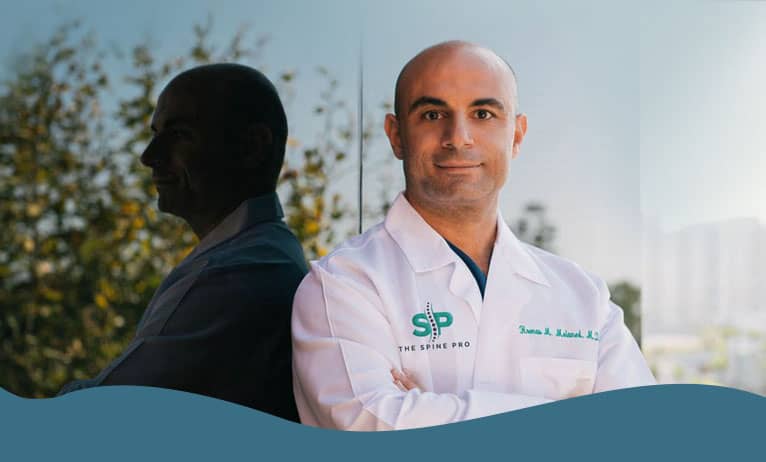Lumbago: How to Identify and Treat Lower Back Pain
Lumbago, commonly known as lower back pain, is one of the most common physical complaints among adults. While most cases of lumbago are not severe and can be treated with self-care, it is crucial to understand the causes and symptoms to manage and prevent future occurrences. If you suffer from severe or persistent low back pain, it is recommended to consult a doctor for proper diagnosis and treatment.

What Causes Lumbago?
Lower back pain can stem from various sources, including lifestyle habits and underlying medical conditions. Recognizing these common causes can help in preventing and managing lumbago:
- Poor posture, especially when sitting for long periods
- Lifting heavy objects improperly
- Herniated or slipped discs
- Arthritis or degenerative disc disease
- Obesity
- Osteoporosis leading to vertebral fractures
- Sedentary lifestyle with inadequate exercise
- Muscle or ligament strain
Common Symptoms of Lumbago
- Dull or aching pain in the lower back
- Sharp or stabbing pain that radiates down the legs
- Stiffness and reduced range of motion in the lower back
- Muscle spasms or cramping in the lower back
- Difficulty standing up straight or walking
- Pain that worsens with prolonged sitting or standing
- Numbness or tingling in the lower back and legs
- Weakness in the legs
Diagnosing Lower Back Pain
It’s crucial to consult a healthcare provider if back pain persists beyond a few weeks or is accompanied by other troubling symptoms like fever, weight loss, or significant leg weakness. Early diagnosis can prevent the progression of potential underlying conditions. To diagnose lower back pain, medical professionals may employ several tests:
- Physical examination to evaluate range of motion, reflexes, and muscle strength
- Imaging tests like X-rays, CT scans, or MRI to identify any structural issues in the spine
- Blood tests to detect underlying conditions such as arthritis or infections
- Nerve studies such as electromyography (EMG) test the electrical activity of nerve impulses in muscles
How is Lower Back Pain Treated?
When it comes to treating lower back pain, or lumbago, various options are available, ranging from conservative treatments to surgical interventions. The approach to treatment often depends on the severity and underlying cause of the pain, as well as the individual’s overall health and response to initial therapies. Effective treatment focuses on alleviating pain, improving function, and preventing recurrence.
Non-surgical Treatments
For many dealing with lower back pain, non-surgical options can provide significant relief and are often the first line of treatment. These approaches focus on reducing pain, improving functionality, and preventing further back issues without surgical intervention. These methods, used alone or in combination, can greatly reduce the discomfort caused by lower back pain and improve daily functioning. Here are some of the most effective non-surgical treatments:
- Physical Therapy: Tailored exercises to strengthen back muscles and improve posture
- Medications: Over-the-counter pain relievers such as ibuprofen or acetaminophen, as well as prescription muscle relaxants if necessary
- Heat and Cold Therapy: Apply heat packs or cold compresses to alleviate pain and reduce inflammation
- Acupuncture: Involves the insertion of needles at specific points on the body to relieve pain and promote healing
- Chiropractic Care: Manual adjustment of the spine by a chiropractor can sometimes relieve lower back pain
- Massage Therapy: Helps relax tight muscles, improve circulation, and decrease stress
Surgical Treatments
While non-surgical treatments are effective for many individuals suffering from lumbago, some cases require surgical intervention to alleviate severe pain and restore mobility. Surgical options are considered when conservative measures fail to improve symptoms or when the underlying cause of the pain, such as nerve compression or structural spine issues, demands more direct intervention. Common surgical procedures for lower back pain include:
- Lumbar Decompression Surgery: Used to relieve pressure on spinal nerves caused by conditions such as herniated discs or spinal stenosis
- Spinal Fusion: Involves joining two or more vertebrae together to stabilize the spine and reduce painful motion or to restore spinal stability following other surgical procedures
Treat Your Lower Back Pain with The Spine Pro
At The Spine Pro, our approach to surgical treatment of lower back pain focuses on precision, personalized care, and the latest advancements in spinal health technology. If you are experiencing persistent lumbago and wonder if surgery might be the right option, contact The Spine Pro today. We are ready to guide you through your treatment options and help you take the first step toward a pain-free life.






